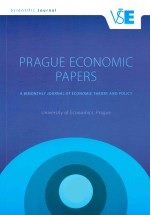Price Level Stabilization: Hayek contra Mainstream Economics
Price Level Stabilization: Hayek contra Mainstream Economics
Author(s): Pavel PotužákSubject(s): Economy
Published by: Vysoká škola ekonomická v Praze
Keywords: price level stabilization; natural rate of interest; business cycle; Hayek
Summary/Abstract: The doctrine of beneficial effects of price level stabilization is an integral part of modern mainstream economics. In the 1920s and 1930s, Friedrich August von Hayek questioned this monetary policy regime, and stressed injection effects of the newly created money aimed at price level stabilization in the economy with expanding natural output. This paper compares the Hayekian theory with mainstream economics. A simple graphical apparatus is used to clarify major differences between the two theories. Standard textbook models are applied to show why the Hayekian approach favours secular deflation over price level stabilization which may lead to the boom-bust cycle. The next section presents New Keynesian arguments in favour of stable prices or even low inflation, and it shows why the Hayek recommendations may result in quasi-recession. The “Wicksellian” equation, which relates inflation gap to the real interest rate gap, is derived to reconcile the Hayek approach with the mainstream perspective. Finally, it is demonstrated that New Keynesian price rigidities might be of much lower importance when the decline in prices is caused by technological progress. A gradually falling price level is then identified as a natural response of the price system in the expanding economy.
Journal: Prague Economic Papers
- Issue Year: 27/2018
- Issue No: 4
- Page Range: 449-478
- Page Count: 30
- Language: English

